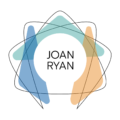More About the Enneagram

INTRODUCTION TO THE ENNEAGRAM
One way to define the Enneagram is as a comprehensive map or model of nine interconnected and equally valid types (or character structures), each of which is defined by:
· A distinctly different world-view
· An identifiable pattern of thoughts, feelings and actions, all of which operate in the background, automatically or habitually, outside of our conscious awareness, and control us in a myriad of ways.
Each type is:
- Defined by a particular habitual focus of attention and habit of prioritizing information;
- Has a preferred emotional habit, pattern of thinking, primary avoidance, psychological defense mechanism and style of relating to others;
- Has its own significant positive strengths and also specific limitations and challenges for our professional and personal growth and development.
No type is better or worse than any other, no type is easier or harder to be, they are just different. Taken together, all nine types give us a holistic map of human patterns.
One very important goal in studying the Enneagram is to bring these unconscious patterns visible, in real time, by increasingly strengthening our ability to observe ourselves (self-awareness) which allows us to make choices about how we think, feel and act.
As with all things Enneagram, the issues highlighted are universal themes and structures experienced by all types of people at various times. A great value in the Enneagram map is the way that it defines how each type embodies preferences within the range of these issues and structures. Once we know our core Enneagram type, it’s as if the map gives us as a series of “short-cuts” to highlight the most important issues that can block our development and progress. From a holistic perspective, we start with the primary issues that impact our type and can then move on to notice and work with those of other types.
Another way to understand this is that there are a number of issues which will appear, type by type, that give us good clues that the type (or the unconscious pattern or habit) is active. Bringing these patterns to our conscious awareness allows us to make choices that can greatly enhance our self-management skills and move us forward toward personal and professional goals.
Here are some good references if you would like to read further.
www.enneagramworldwide.com — the Enneagram school in which I was trained and in which I sometimes teach. This site has video clips of interviews with individuals describing their Enneagram type and how they know which one is primary to them. See particularly “tour of the types” for a good clear overview.
Books:
Nine Lenses on the World, 2014, Jerome Wagner(a very comprehensive description of all nine types from the perspective of a longtime psychologist and Enneagram teacher). Might be more than you ever wanted to know!
The Enneagram in Love and Work, 1998, Helen Palmer (the most accessible book by my primary Enneagram teacher – there is a particularly useful section in the back of the book that describes interactions between specific pairs of types).
© Joan R. Ryan, July 2017
